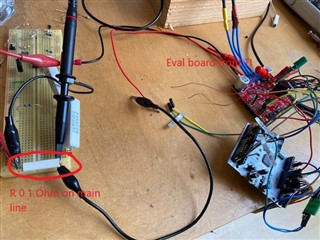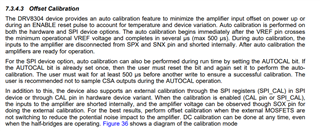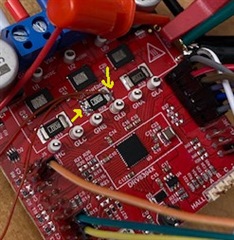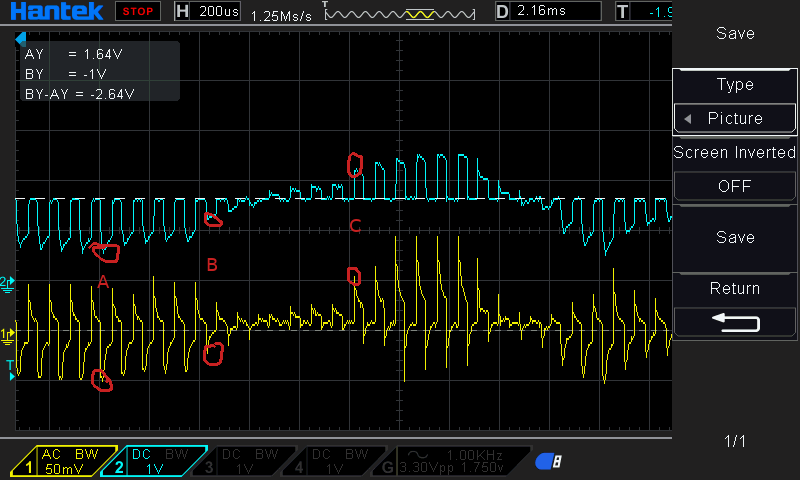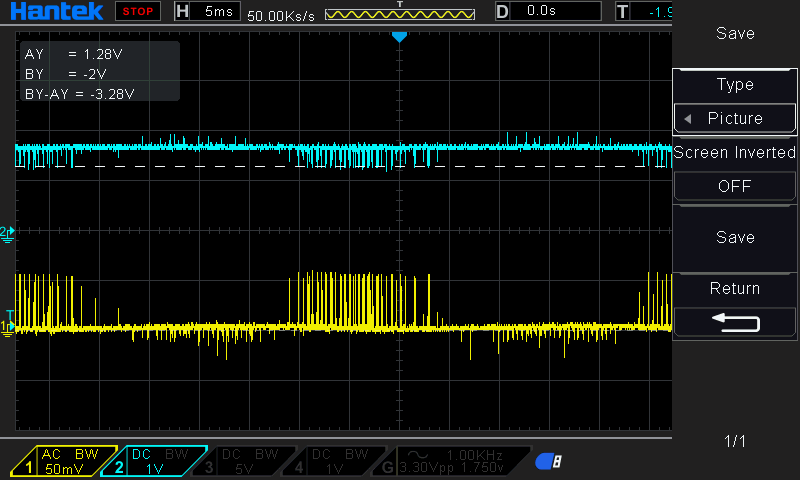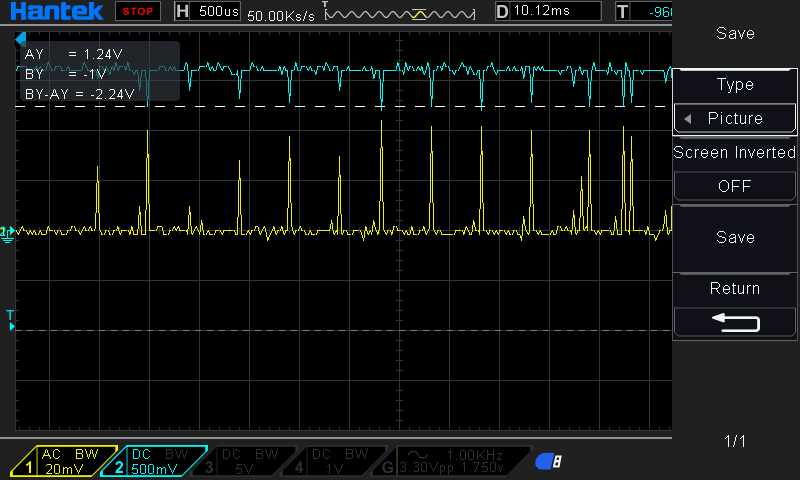Other Parts Discussed in Thread: DRV8304,
Hello, I have a question about a strange behavior in current measurement. I use on the main line of the supply a shunt resistor with 0.1 ohm, this is the yellow line on the osciloscopes's screen.
With the blue line is the SOx output of the DRV8304H. As you can see on the red line the voltage drop on the shunt resistor is 50 mV, that means I=V/R=50mV/0.1Ohmn= 500 mA
The SOx Pin output voltage is 1V and that means 10 A current. I assume that BOOSTXL board is configured to used 10x Gain. So I cannot explain why I measure 500mA Current but DRV8304 delivers a measurment of 10A. That is strange to me and my software cannot run correctly.

This is the implementation of my software to calculate the current, In my case 1V = 1241 ADC Raw Value.
An other Problem is when I disconnect the motor and I use PWM3x with 50% duty cycle then I have the following output on the SOx. Osciloscope is on AC Decoupling, SOx is the blue color. This noise has as result in the software to 'see' about 1A on the peeks, although the motor is disconnected and the setup is on motor stop configuration.

Could you help me? Because I think I have wrong data from the IC and my software cannot run properly.
Appreciatively,
Nikos



